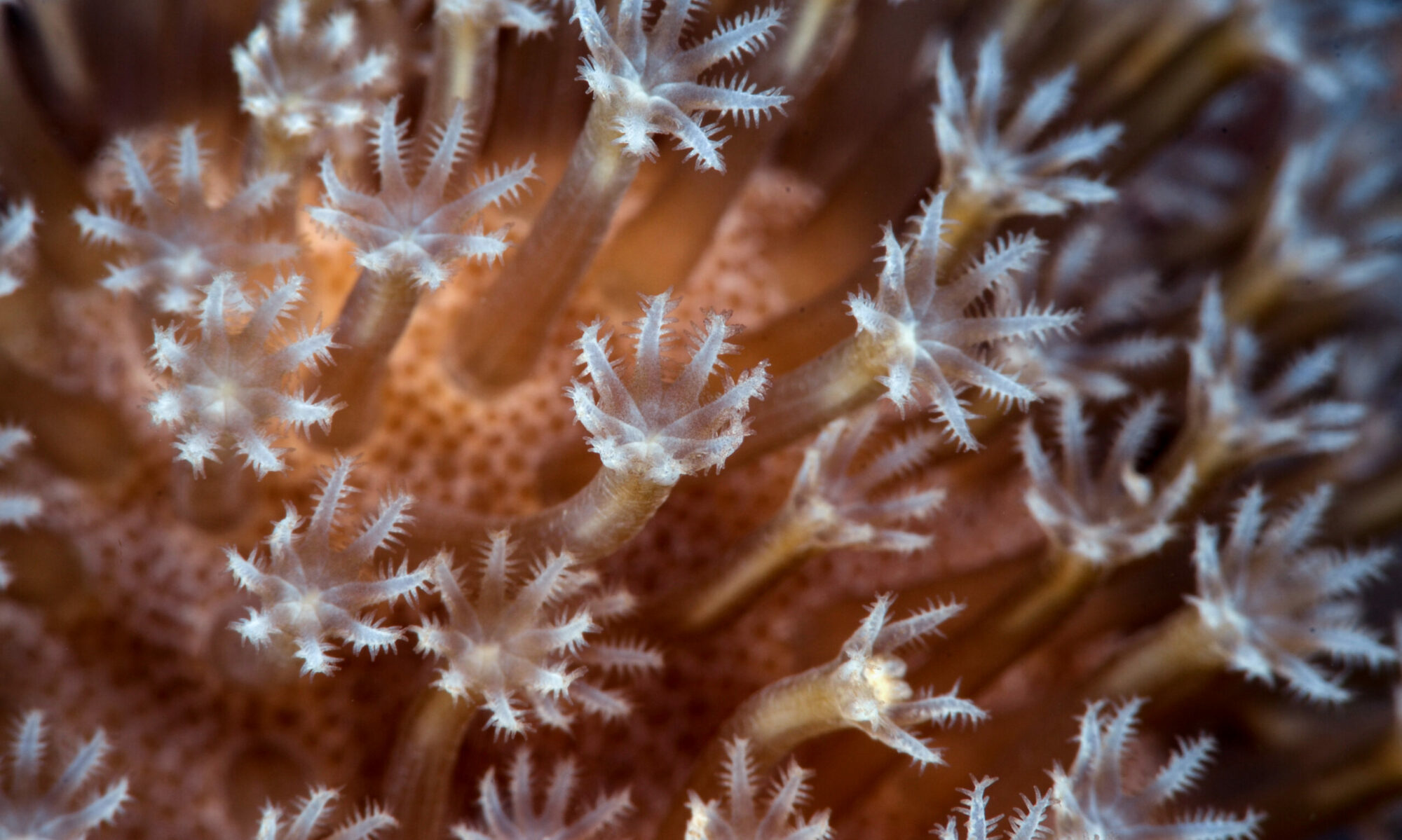


University of Guam NSF EPSCoR Graduate Research Assistant Lauren Kallen defended her Master’s thesis—a research project that represents the first study of its kind on Guam, focusing on understanding the population dynamics of Drupella fragum, a sea snail that feeds on coral tissue and can be found on shallow reef flats around the island.
Kallen defended her thesis, “Genetic Characterization of the Corallivore Drupella fragum Outbreaks on Guam,” on April 29, 2025.
The goals of this study were to observe the behavior and distribution of the Drupella species in order to understand population outbreaks and explore mitigation strategies. For her study, Kallen observed the effects of temperature changes on the species’ reproductive outputs as well as genetic diversity within outbreak populations.
A Drupella fragum outbreak is quantified by finding 2 or more individuals per metered square. During her research, Kallen observed high numbers of the species of sea snail during outbreaks at Agat cemetery.
“It would actually take a while to find a single snail so finding more than one was a huge indicator of an outbreak,” said Kallen during her presentation. “[The highest number observed] was hundreds within a small area, clumped together, which was kind of crazy to see.”
In her research, Kallen found that populations between two observed sites in Tanguisson and Agat were genetically interconnected, yet outbreaks were only observed in the Agat cemetery location. Kallen notes that Tanguisson is a healthier site overall than Agat cemetery, particularly in terms of coral condition and sedimentation. While outbreak conditions still need to be studied further, Kallen notes that it is possible that the overall health of the site may explain the absence of outbreaks at Tanguisson beach.
Along with coral tissue, the Drupella snail also feeds on coral mucus which corals secrete as a stress response to protect themselves from severe environmental conditions. Kallen notes that it is possible that coral mucus secretion may serve as a cue that attracts the Drupella to certain areas.
There have been several studies on the species worldwide but because there has been no other research on Drupella outbreaks on Guam, Kallen referred to studies on Crown-of-thorns starfish outbreaks to help shape her research and methodology.
“Hopefully, my work will inspire future studies that expand on these findings by testing more environmental variables and conducting further genetic analyses on these coral-eating snails in Guam,” said Kallen.
She hopes that her study will encourage researchers to do further analysis on environmental and genetic factors of species outbreaks. While there is still more to learn about Drupella fragum outbreaks, Kallen hopes that it will provide a stepstone for more research on the species to help protect Guam’s vulnerable reefs.
Kallen’s research is supported by Guam NSF EPSCoR as part of its Graduate Research Assistantship program, funded by the National Science Foundation, with aims to situate Guam as a premiere research and STEM education hub.


